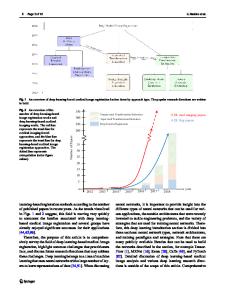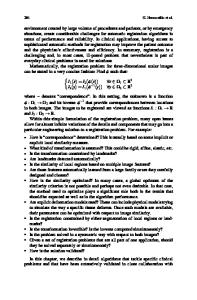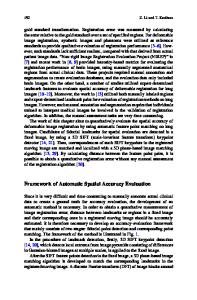Medical Image Registration
In this chapter, we cover the necessary background information required to understand medical image registration, the basic tools required to implement registration algorithms, and demonstrate a complete application for various types of registration betwe
- PDF / 551,198 Bytes
- 19 Pages / 439.37 x 666.142 pts Page_size
- 38 Downloads / 489 Views
Medical Image Registration Usaf E. Aladl and Terry Peters
Abstract In this chapter, we cover the necessary background information required to understand medical image registration, the basic tools required to implement registration algorithms, and demonstrate a complete application for various types of registration between different modalities using freely available and maintained software.
9.1
Introduction
Over the past 40 years, medical imaging technology has evolved from twodimensional X-ray projections, to sophisticated three-dimensional digital medical imaging modalities such as CT, MRI, fMRI, and ultrasound. In addition, histology images can now be provided digitally, and are an additional rich source of medical imaging information. These tools have now become part of standard daily diagnostic procedures for many areas of medicine, and there are extensive computer-aided diagnostic techniques that assist the physician in their interpretation. While these modalities record valuable information about the patient, each provides information about a different physical quantity (electron density, magnetic behavior of hydrogen nuclei, reflection of ultrasound from tissue interfaces, etc.). These datasets are often complementary to one another. Because these different datasets each tell their own story, the problem is to consolidate these individual pieces of information into a single narrative to better understand the disease process. This is where medical image registration plays a crucial role. Image registration is the process of aligning different images or 3D volumes together in a single space. One of the most important applications of image registration is for matching an image acquired at one time point during a treatment to an image from a different time-point, or to an image acquired for planning the
U.E. Aladl (*) Imaging Research Laboratories, Robarts Research Institute, 100 Perth Drive, P.O. Box 5015, London, ON, Canada N6A 5K8 e-mail: [email protected]
A. El-Baz et al. (eds.), Multi Modality State-of-the-Art Medical Image Segmentation and Registration Methodologies, DOI 10.1007/978-1-4419-8204-9_9, # Springer ScienceþBusiness Media, LLC 2011
227
228
U.E. Aladl and T. Peters
procedure. Such procedures are known as intra-patient registration, which is often used to monitor progress during treatment. Matching images from different patients can be used for generating a model of organ motion across a population of patients, or to match an image to an atlas (an average of images acquired from a number of patients), thereby allowing information to be transferred from the atlas to the newly acquired image. Image registration is the process of transforming different images into a single coordinate space so that the data obtained from the different image modalities can be compared on a pixel-by-pixel or a voxel-by-voxel basis. In this case, we often refer to one image as the source and the second as the target. The image registration process involves spatially transforming the source image so th
Data Loading...











